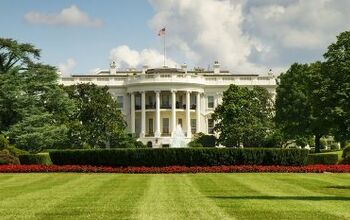For Uber, Are On-Demand Flying Cars the Next Frontier?
One of my favourite childhood cartoons was The Jetsons, an animated sitcom where technology had transformed the world into a futuristic utopia. The intro of every Jetsons episode features the family commuting in a flying car.
Last Thursday, Uber published a white paper promising flying cars in the next decade. After 60 years as a cartoon, are The Jetsons becoming a reality?
The Dream
The 98 page white paper, titled “Uber Elevate – Fast-Forwarding to a Future of On-Demand Urban Air Transportation,” can be summarized in one sentence: “A network of small, electric aircraft that take off and land vertically will enable rapid, reliable transportation between suburbs and cities and, ultimately, within cities.”
The promise is a great one: “Imagine traveling from San Francisco’s Marina to work in downtown San Jose—a drive that would normally occupy the better part of two hours—in only 15 minutes.”
Uber is speculating the timing is right for three main reasons.
First of all, current routes are underserved by existing infrastructure and the proposed Vertical Take Off and Landing (VTOL) aircraft would appeal greatly for those with longer distance commutes. Secondly, recent technological developments have allowed VTOL aircraft to be quieter, faster, and cheaper than traditional VTOL aircraft like helicopters. Finally, VTOL infrastructure development would be significantly cheaper than traditional ground-based infrastructure.
Sounds fantastic?
The Reality
The problem: much of the technology and regulations do not exist. To be fair to Uber, the longer part of the white paper discusses these “market barriers” to entry.
The technological barriers are considerable. The proposed vehicle of choice, a VTOL aircraft does not exist commercially. The most similar aircraft would be the military Bell Boeing V-22 Osprey, which is much larger and not powered by the desired quiet electric drivetrain.
The electric propulsion technology desired faces all the same challenges as the current generation of electric cars. While Tesla has promised its Gigafactory will reduce lithium-ion battery cost by more than 30 percent, there are also issues with battery capacity, charging speed and durability.
In one of my past jobs, I designed an airport traffic control tower for a small airport in Boise, Idaho. The amount of processes and regulations required by the Federal Aviation Administration (FAA) was astonishing. There was a tendency to defer to historical design standards, and not innovate with ground-breaking ideas. For this new transportation system to work, the FAA would need to certify the proposed new VTOL aircraft, a process that could take as long as 20 years. In addition, there would be new regulations required for air traffic control with the huge amount of new low-altitude, low-speed aircraft.
Uber admits its plan is ambitious and would need “all the key actors in the VTOL ecosystem — regulators, vehicle designers, communities, cities, and network operators — [to] collaborate effectively.”
For Uber Elevate, Uber isn’t physically investing into any of the technology or infrastructure, but instead will be a “facilitator” encouraging the technology and using it in the same way they are using existing car technology.
Still, I have my doubts about Uber’s commitment to the technology.
In September, Uber launched a fleet of its in-house developed self-driving cars in Pittsburgh. Uber spent a considerable amount of time and effort on these autonomous cars and will likely have them market ready 3 to 5 years earlier than its competitors.
For Uber Elevate, there isn’t a similar investment in the technology. Talk is cheap. Until Uber (or someone else) makes a sizeable investment, The Jetsons flying car will just stay an animated fantasy.
When he's not writing about cars, Henry is driving his GTI to construction sites and transporting his kids to preschool. Henry is a professional engineer, road biker, marathon runner, and lives in Vancouver, Canada.
More by Henry Leung
Latest Car Reviews
Read moreLatest Product Reviews
Read moreRecent Comments
- Lou_BC Well, I'd be impressed if this was in a ZR2. LOL
- Lou_BC This is my shocked face 😲 Hope formatting doesn't fook this up LOL
- Lou_BC Junior? Would that be a Beta Romeo?
- Lou_BC Gotta fix that formatting problem. What a pile of bullsh!t. Are longer posts costing TTAC money? FOOK
- Lou_BC 1.Honda: 6,334,825 vehicles potentially affected2.Ford: 6,152,6143.Kia America: 3,110,4474.Chrysler: 2,732,3985.General Motors: 2,021,0336.Nissan North America: 1,804,4437.Mercedes-Benz USA: 478,1738.Volkswagen Group of America: 453,7639.BMW of North America: 340,24910.Daimler Trucks North America: 261,959



































Comments
Join the conversation
If only someone would invent a way for a road full of cars to pass over a perpendicular road full of cars so that none of the lanes of traffic needed to stop. Cars "flying" over other cars, but on pavement. https://en.wikipedia.org/wiki/Stack_interchange
I hate Uber and Lyft drivers in SF, the pricks stop anywhere and block traffic at busy times, total dicks who think they can do whatever they want. With all the construction and issues in SF right now we don't need them making it worse.